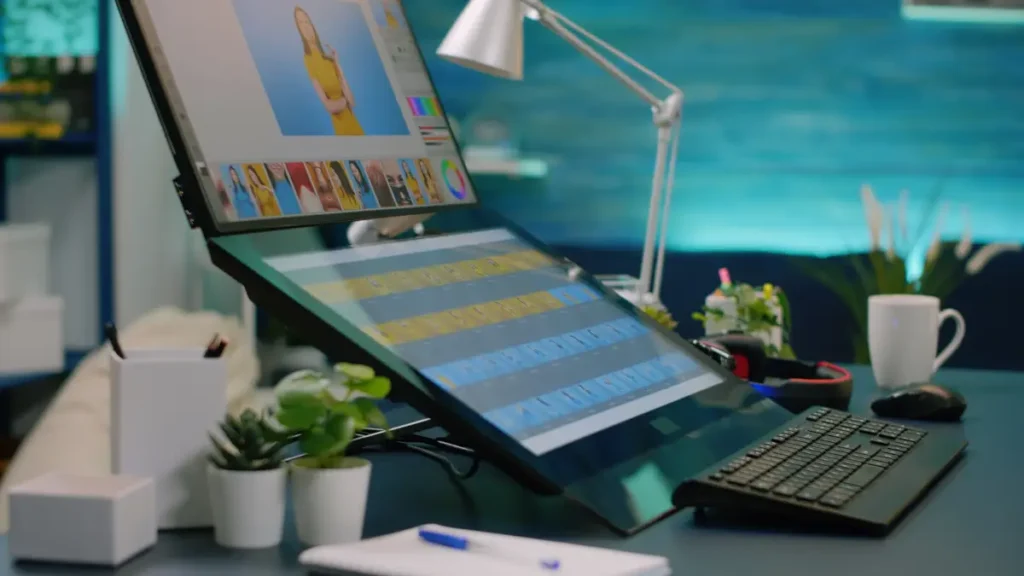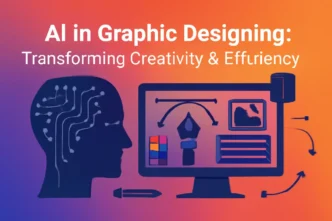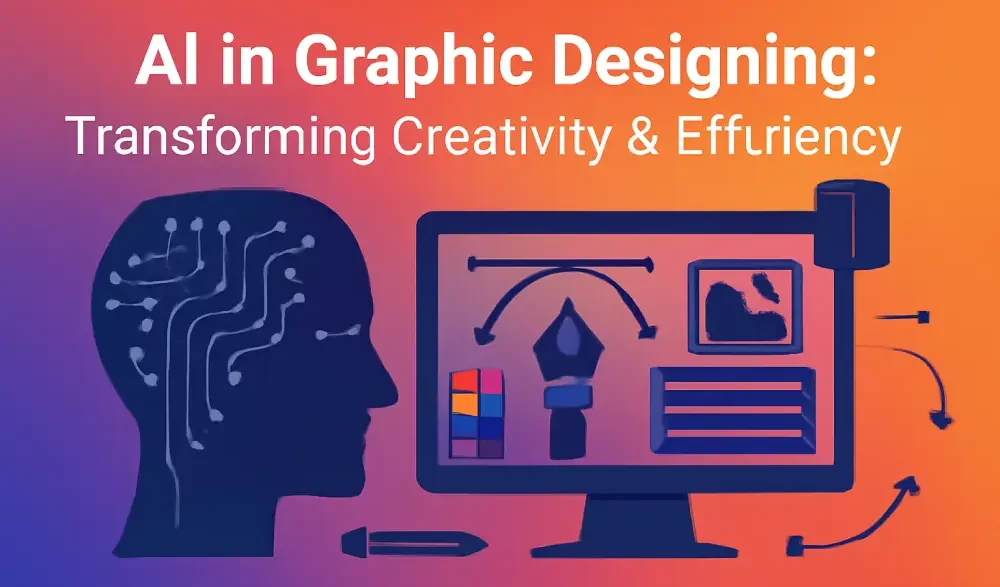Graphic design has always been concerned with imagination, competence, and the capability to relay a story visually. However, in recent years, another actor has appeared to disrupt the creative segment of artificial intelligence. And it is altering the game.
Graphic design in AI is not a vision of the future anymore. And it arrived, and it is assisting designers to work quicker, smarter, and with a new stab of creativity. Speeding up the process of coming up with design concepts in a matter of seconds to eliminate the routine parts of the process, AI is proving to be an ally that each creative can count on.
In this piece, you will learn how AI has made its way to the world of design and why it is one of the tools that designers should not resist, as well as how to operate it so that the human touch is not lost along the way.
What exactly is AI in Graphic design?
What we refer to here when we speak about AI in Graphic Designing is applying artificial intelligence tools and algorithms to assist in creating, editing, and enhancing visual designs.
In place of performing all of the steps by hand, AI-enabled tools are capable of:
- Propose layout and compositions
- Compose labelling systems, CFs directly through text prompts
- Suggest color schemes according to what your brand is
- Background removal, automatic, or changing the quality of the image
- Scale Chroma in a single mouse-press
It is not about taking designers out but providing them with more time to work on the enjoyable, creative aspects of their job, instead of spending time on the menial tasks.
How AI in Graphic Designing is Sparking Creativity
It is one of the greatest myths, according to which AI kills creativity. In practice, it tends to do the reverse.
This is the way AI can stimulate your imagination in graphic design:
Instant Ideas When You’re Stuck
Creative block indeed exists. There are times you simply cannot make heads or tails of what to get started on. In a few minutes, AI can run thousands of potential design concepts, thus providing you with a starting point. They may encourage new ideas even when you do not use them as such.
Designs That Adapt to Your Audience
Some AI analytics tools will study your target market and propose visual images that will resonate more with them. It can be particularly applicable to the field of advertising, where fine-tuning of the design would increase involvement.
Feedback, No Waiting
Rather than share your design with one of your colleagues to get their feedback, your AI can highlight alignment problems, contrast, or layout imbalances to allow you to correct them at the moment.
Efficiency: Where AI Shines
The creativity is good; however, time waits for no one. It is at this point that AI in Graphic Designing is a lifesaver.
- Quick Edits -Just need to drop a backdrop or edit colors? It takes seconds.
- Batch Processing- Optimize hundreds of images and resize in one go.
- Smart Content Placement – Allow AI to make a smart suggestion on where to place text or logos in order to have the right impact.
Hours spent could now be done in minutes, leaving you free to attend to other, greater, and larger projects.
AI Tools Every Designer Should Know

Whenever you are ready to dip your toe in the water of AI-powered design, the following are some of the tools to consider:
- Adobe Firefly is Great at generating AI images and text effects.
- Canva Magic Design-Transforms your brief into templates that you can use.
- Figma AI Plugins automate the layout and color recommendations.
- Midjourney & DALL·E – Create images of text.
- Khroma – Designs colour palettes exclusive to your style.
- Remove.bg This site is the tool to quickly remove the background.
The Reasons Why Graphic Designing AI is worth adopting
- Quicker and of higher quality.
- Branding is similar throughout.
- Decrease in expenses through the minimization of manual labor.
- People with no design credentials can have ready access to creativity.
- New, motivational ideas when you require them.
But it is not Perfection, here is why:
Every technology, though, has its risks:
- Originality issues- Using AI to an excessive degree can make designs generic.
- Learning curve – It takes practice to know how to draw the best.
- Ethical considerations – Legal issues AI-art Copyright over content generated by AI remains unregulated.
- Quality control- not everything produced by AI can be set in stone.
How to Use AI in Graphic Designing Without Losing Your Creative Edge
To get the best out of AI in graphic design, the following are some tips:
- AI should not be your boss. It is still up to you to see the vision.
- Personalize AI outputs at all times. Put your style in the design.
- Keep learning. The AI tools are evolving rapidly- keep up with the trends to keep up with the tools as well.
- Pick and choose tools. Assess your needs and apply your different needs to various AI platforms.
Future of AI in Graphic Designing
Next time, AI might be even more intuitive- it might allow designing an entire project based on a single voice signal, or generate personalized imagery in real time per viewer.
However, one thing is certain: the most successful designs among them will still be human and can sense the combination of technology and storytelling. It will be supported by AI, and you will act as the creative director.
Conclusion
Artificial intelligence in graphic design is not a preparation to replace humans; rather, it is to work together. It allows designers to be more productive, to crack creative blocks, and to stay ahead of the rapid pace of the current digital world. Using the efficiency of AI algorithms and personal creativity, one can create designs not only beautiful but also deep.

